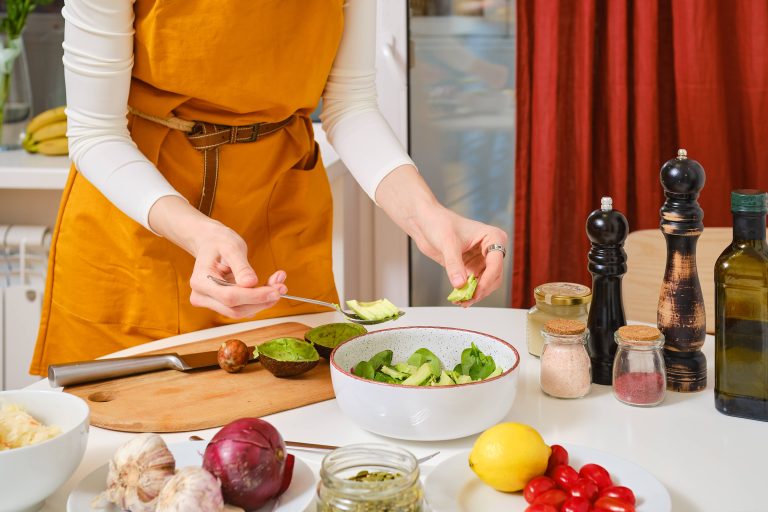
Pizza often gets a bad rap in the world of healthy eating, but when made thoughtfully, it can be a nutritious and delicious meal option. With a few smart choices and a little creativity, you can transform this favorite comfort food into a wholesome treat that your body will thank you for. Here’s how to make a nutritious pizza at home that satisfies your taste buds without compromising your health goals.
1. Choose a Whole-Grain Crust
The foundation of any pizza is its crust. Traditional crusts made from refined white flour are low in fiber and essential nutrients. However, opting for a whole-grain crust can significantly boost the nutritional profile of your pizza. Whole grains are an excellent source of fiber, which aids in digestion and helps maintain stable blood sugar levels.
You can either buy a ready-made whole-grain crust or make your own at home. If making from scratch, consider using whole wheat flour, spelt flour, or even experimenting with gluten-free options like almond flour or quinoa flour for a unique twist. For an added nutritional punch, incorporate seeds like chia or flax into your dough.
2. Get Creative with the Sauce
While a classic tomato sauce is both delicious and nutritious, you don’t have to limit yourself. If using tomato sauce, choose one with no added sugars to keep your pizza health-friendly. Better yet, make your own by blending fresh tomatoes, garlic, olive oil, and herbs.
Alternatively, consider trying pesto, made from basil, spinach, nuts, and olive oil, for a flavor-packed antioxidant-rich sauce. White sauces made from pureed cauliflower or bean-based sauces like hummus can offer exciting variations, providing additional nutrients you didn’t know you were missing.
3. Pile on the Veggies
One of the best things about making pizza at home is the ability to incorporate a variety of vegetables. Vegetables add color, texture, and a wealth of nutrients. Load up your pizza with a variety of colorful veggies like bell peppers, red onions, spinach, mushrooms, zucchini, and artichokes. These will not only make your pizza more filling but also significantly increase its vitamin and mineral content.
Don’t shy away from getting creative. Seasonal veggies allow for different flavors and health benefits each time you make pizza. Roasting veggies beforehand, such as eggplant or butternut squash, can bring out their natural sweetness and enhance your pizza experience.
4. Add Lean Proteins
A balanced pizza isn’t complete without some protein. If you eat meat, opt for lean sources such as grilled chicken, turkey pepperoni, or shrimp. For a vegetarian or vegan option, consider topping your pizza with tofu, tempeh, or a sprinkle of nutritional yeast for a cheesy flavor.
Incorporating legumes like chickpeas or black beans can also boost the protein content, making your meal more satisfying. Pairing different proteins, like lentils and cheese, can offer a complete amino acid profile for your vegetarian pizza.
5. Choose Quality Cheeses Wisely
Cheese is a staple of any pizza, but it can also be a source of excess fat and calories. Moderation and quality are key. Opt for cheeses that pack a flavor punch, allowing you to use less without sacrificing taste. Stronger cheeses like feta, goat cheese, or Parmesan can be used sparingly.
Low-fat or reduced-fat options are available for traditional cheeses like mozzarella. Or, if you’re going vegan, try plant-based cheeses made from nuts and nutritional yeast, which can provide a creamy texture and umami flavor.
6. Include Healthy Fats
Healthy fats are an essential component of a balanced diet and can be easily integrated into your pizza. A drizzle of extra virgin olive oil can enhance flavors while providing monounsaturated fats that support heart health. Nuts and seeds can add crunch and additional nutrients. For a unique twist, consider adding slices of avocado post-bake, which provides heart-healthy fats and a creamy texture.
7. Spice It Up with Herbs and Spices
Instead of reaching for the salt shaker, try flavoring your pizza with a mix of herbs and spices. Fresh herbs like basil, oregano, thyme, and rosemary not only add a burst of flavor but also provide antioxidants. Red pepper flakes, garlic powder, and black pepper can also provide a kick without the added sodium.
For an exotic taste, experiment with spices like smoked paprika or cumin, which can add depth and richness to your healthy creation.
8. Portion Control and Mindful Eating
Even the healthiest pizza can contribute to an unhealthy diet if eaten in excessive amounts. Use portion control to ensure you enjoy your pizza as part of a balanced meal. Pair your pizza with a side salad or vegetable soup to fill you up without overindulging.
Practicing mindful eating—savoring each bite and listening to your body’s hunger signals—can help prevent overeating and increase the satisfaction from your nourishing pizza.
Conclusion
Creating a nutritious pizza at home is not just possible, but also fun and rewarding. By making mindful ingredient choices, you can indulge in this beloved dish while maintaining your health commitments. Experiment with different ingredients to find combinations that you love, making your homemade pizza night both enjoyable and health-conscious. Happy cooking!










